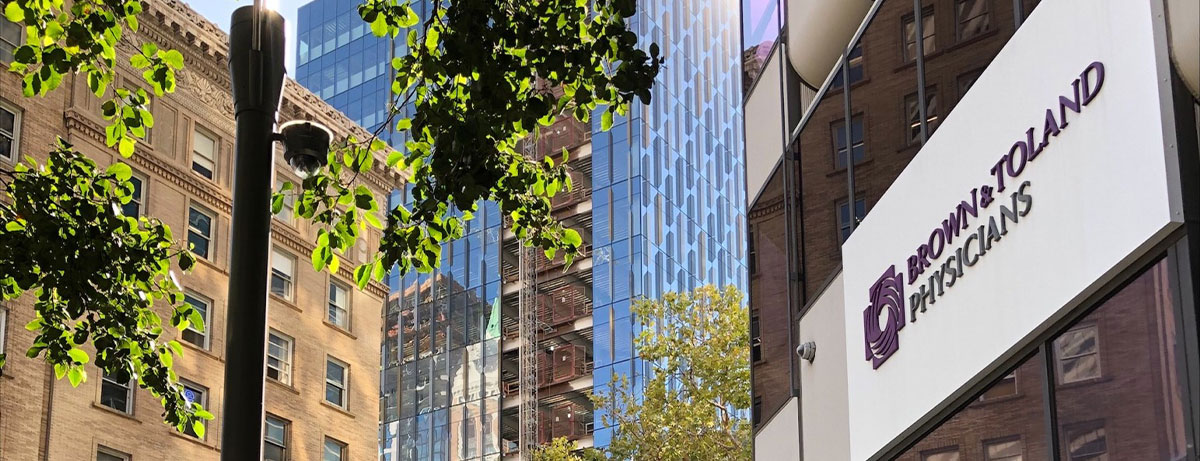Taking a Stand for Healthy Bones and Joints

Have you stood up today? Raised a cup of coffee to your lips? Walked a few steps? It’s easy to take these kinds of movements for granted, but we humans are incredibly agile creatures. And we’ve got our bones and joints to thank for much of that strength and flexibility.
One way to express our gratitude to these multi-talented body parts is to take good care of them. The first step in maintaining – and even improving – healthy bones and joints is knowing a bit more about them.
The Bones
Built mostly from collagen and calcium, our bones provide our bodies’ structural framework. They are capable of growing and rebuilding, as well as weakening and breaking.
As we age, we become more susceptible to osteoporosis – a condition that makes bones less dense and more brittle. It’s estimated that half of all women and one-fourth of all men over the age of 50 will suffer a broken bone due to osteoporosis. And these breaks aren’t always due to dramatic falls; in extreme cases of osteoporosis, even minor bumps can lead to fractures.
Nurturing bone health can be a life-long practice. Diet and exercise can help sustain bones at every stage of life. Follow these bone-healthy dos and don’ts:
- DO eat foods packed with calcium, folate, and vitamins C, D and K.
- DO talk to your doctor about nutritional supplements if your diet doesn’t deliver all that you need. He or she might also suggest prescription medication treatment.
- DO get regular exercise. Active bones are stronger bones.
- DO maintain a healthy weight. Too heavy and you strain your bones’ carrying capacity; too thin and you risk depriving your bones of crucial nutrients.
- DON’T eat foods heavy with saturated fats, which can elevate levels of homocysteine (known to decrease bone mass).
- DON’T smoke. Smoking can decrease bone mass and raise your risk of fractures.
- DON’T drink alcohol to excess, as intoxication can put you at greater risk for falls.
- DON’T drink soda when you can choose a healthier beverage such as milk, juice or water.
The Joints
Our joints, made largely of collagen and cartilage, help keep our bones in place while allowing them a certain amount of movement. Joints provide a layer of protection between our bones so they don’t grind directly against each other.
Just as osteoporosis is a weakening of the bones, osteoarthritis is what happens when the joints begin to break down over time. It’s the most common chronic joint condition and can happen anywhere in the body. Typical symptoms of osteoarthritis are pain, stiffness and swelling at the site.
Whether you’re taking care of achy joints or establishing early habits to prevent future joint problems, follow these tips for best results:
- DO maintain an exercise routine. Low-impact activities such as walking, swimming, cycling, tai chi and strength training are easy on the joints.
- DO stay strong. Joints are better protected when surrounded by muscles.
- DO use braces and/or padding to support vulnerable joints when needed.
- DO eat a healthy diet. Foods rich in Omega-3 and vitamin D can help reduce joint inflammation.
- DO get serious joint injuries looked at by a health care professional.
- DON’T stay stationary. Take stretching and strolling breaks throughout the day, especially if your routine keeps you sitting at a desk.
- DON’T allow your weight to climb. Your hips, knees and back carry the load, and each pound adds pressure on the joints.
- DON’T ignore aches and pains. Use ice to reduce swelling and over-the-counter medications to manage discomfort as needed.
The Right Move
Bones and joints are among the most impressive components of the human machine. But, like anything, they need a little TLC to stay in good working order. It’s never too late to start giving them the respect they’ve earned. Stand up for them and they’ll likely return the favor!
Sources:
http://orthoinfo.aaos.org
http://www.arthritis.org
https://www.nlm.nih.gov
http://www.webmd.com
